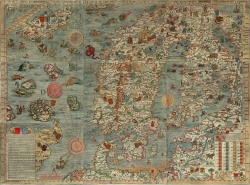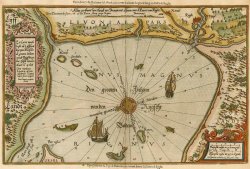Name of the Ruhnu island 



Ruhnu, in Swedish Runö [rü:nö], in Ruhnu language Run [rü:n], in Latvian Roņu sala.
'Ö' means an island in Swedish. Therefore, runö means just Ruhnu island. The same name ending appears also in other former names of the islands of Swedish habitats like Dagö, Ormsö and Ragö. In Latvian, 'roņis' means a seal and 'sala' an island, Roņu sala means in direct translation a seal island.
Different name forms have been used historically. Russwurm (1855) introduces additional name forms: "Runö, Ruunö, Ruhnö, Ruun, Rühnen, Ruynen, Rauma, in Estonian Ruhn [Ruchn]. The people of Ruhnu themselves pronounce the name Ruynei."
History
Ruhnu was first mentioned in written sources (in 1341 in the letter of Kuramaa bishop Johannes in which Swedish law about the people of the island was confirmed) with the Swedish name form Runen. On the 17th-century maps Runa name form has been used (Olaus Magnus, „Carta Marina”, 1535; Giacomo Gastaldi, „Prussia e Livonia nova”, 1548), in the second half of the century the most common name form is Runen (e.g. Lucas Waghenaer´s „Livoniae”, 1584; Gerardus Mercator´s „Livonia”, 1590) or Rune (Johannes Portantius´s and Abraham Ortelius´s „Livoniae Nova Descriptio”, 1574; Philipp Galle Livonia, 1598). Starting from the 17th century, the name form Runö becomes common (Ruhnöö, on the map of 1688), the form Runo is also used (the Livonian map of Adam Olearius since 1659) or Runoe (e.g. the Saaremaa paper of Mellin´s 1798-year map and Jacob Friedrich Schmidt´s „Tabula Geographica Gubernii Rigensis in suos circulos Divisi”, 1772, also in the census of 1782). The Rueno used in the census of 1826 is interesting. The Estonian Ruhno and Ruhnu were used since the tsarist era until the end of the Second World War, whereas the most common name form was Ruhno, that also in official documents (see land consolidation maps of 1930). After the war, the only name that remained in use was Ruhnu.
Related articles
Created in 2013





